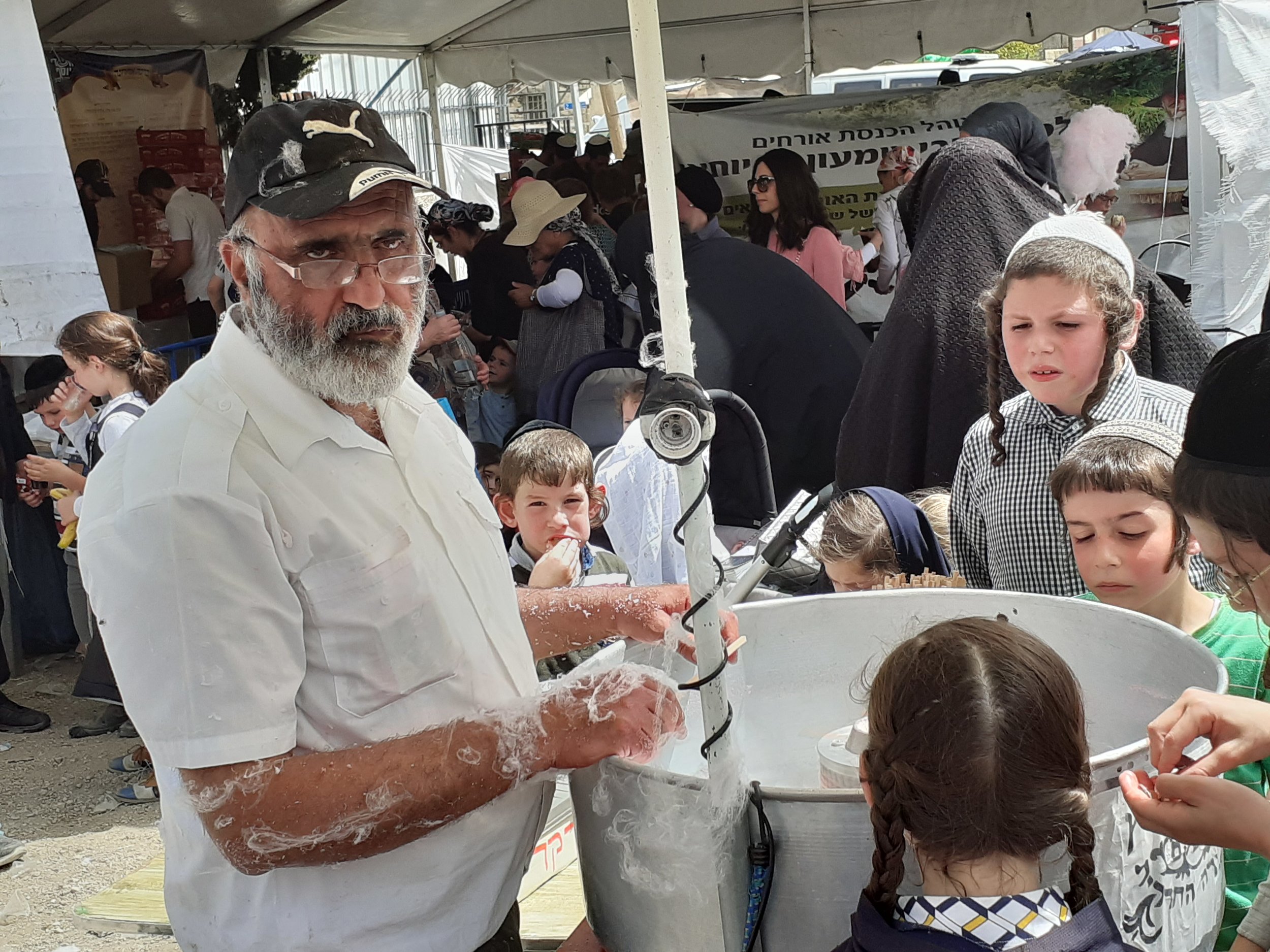Lag b'Omer: the Jewish holiday of faith and folklore
JERUSALEM — Lag b'Omer is the 33rd day of Judaism's somber seven-week "counting" between Passover and Shavuot (Pentecost). The holiday marks the ceasing of a plague that killed 24,000 disciples of Rabbi Akiva ( c. 50–135 CE), a sage martyred by the Romans during the genocidal persecution of the Emperor Hadrian.
A man deep in prayer. Photo by Gil Zohar.
After the execution in Caesarea of his teacher, Rabbi Shimon bar Yochai and his son Eleazar fled to a cave in the remote hills of the Upper Galilee. According to tradition, they remained hidden there for 12 years, sustained by the fruit of a carob tree, studying the Torah. Bar Yochai is credited with writing the Zohar, a mystic commentary on the Pentateuch and a classic text of kabbalah, an ancient Jewish tradition of mystical interpretation of the Bible. He emerged from his refuge an ascetic charismatic master of learning and miracles. The Midrash credits him with having "revived the Torah at that time." He died on Lag b'Omer, becoming a legendary figure in the lore of Jewish mysticism and folk religion.
In the 16th century, mystics from the kabbalist colony of Safed initiated the custom of the annual Lag b'Omer hilula (meaning pilgrimage but literally wedding feast) to the nearby tomb of Shimon bar Yochai. In recent years, upwards of 200,000 people have come on this early summer holiday, pitching tents, making bonfires, grilling meat, reciting Psalms and giving three-year-old boys their first haircut in an unique expression of faith and folk belief.
Implicit in the pilgrimage is the kabbalist principle that the death of a sage is the reunion of his soul with God - a kind of spiritual marriage. Joy rather than grief marks the anniversary of his passing, in direct proportion to the rabbi's reputation as a saint and miracle worker. The grave, in anticipation of the messianic rebirth of the dead, becomes the site of veneration and feasting.
Simon the Just’s Cave Tomb
While Meron is the main shrine visited by masses of pilgrims on Lag b'Omer, which this year fell on Thursday, May 23, an alternative and smaller hilula takes place at the Tomb of Shimon haTzadik (Simon the Just) in east Jerusalem. Scholars dispute the identity of Simon, though the scholarly consensus of the late 20th century has fallen on Simon II who lived in 219–199 BCE.
According to apocryphal traditions, Simon was the High Priest who greeted Alexander the Great in Jerusalem, and averted a national calamity. The Mishna (Avot 1:2) calls him "one of the last survivors of the Great Assembly." His saying, "On three things does the world stand - Torah, divine service and acts of loving kindness," has been put to music in a classic Israeli pop melody.
Inside the tomb of Simon the Just. Photo by Gil Zohar.
Simon's Tomb is located in Wadi Joz (Arabic for the Valley of Walnuts), the dry river bed separating the Palestinian neighborhoods of Sheikh Jarrah and the American Colony. The site consists of a catacomb of three interconnecting stepped chambers, called a trough tomb, and a fenced-in courtyard. Visitors are separated by gender. The tomb, long ago plundered of any ossuaries, is bare. Archaeologists date the rock-hewn sepulcher to the 2nd century CE. A Latin inscription identifying it as that of Julia Sabina, a Roman patrician, has made no impact on the popular imagination.
Nearby are the Tombs of the Little Sanhedrin and a cave said to be the grave of Nahmanides (1194-1270), the Spanish exegete who fled to Israel in 1267 to escape the Dominican Inquisition after winning the Barcelona Disputation four years earlier.
Kids watch a candy floss-maker during Lag b’Omer. Photo by Gil Zohar.
The tomb’s divided Israeli-Palestinian neighborhood
For many centuries Simon the Just's cave tomb was only accessible by paying an admission fee to the site's Muslim Arab caretaker; this was a common arrangement at Jewish and Christian (and Roman) sites in Jerusalem. In 1876, the Jewish community purchased the sepulcher and surrounding land for 15,000 francs. Under the guidance of Jerusalem's chief rabbi, Shmuel Salant, a neighborhood was built around the tomb starting in 1891. By 1948, 20 families were living there. Those Jews became refugees during the 1948 Arab-Israeli War, when Jerusalem was divided. In turn, Palestinian refugees squatted in their empty homes. Today some Jews have regained their property through challenges to the Israeli Supreme Court. Every Friday protesters picket outside the neighborhood, seeking justice for those facing the loss of their homes.
Some 10,000 celebrants packed the site today, creating a carnival-like atmosphere with candy floss and circle dancing. While police blocked off the street to traffic, Hassidim and haredim (ultra-Orthodox Jews) dressed in their Sabbath finery streamed to the site on foot and by bicycle from their nearby neighborhoods.
The pilgrims jostled their way through the crowd to visit the tomb, light candles, recite prayers and make heavenly petitions.
As at Meron, three-year-old boys received their first haircut, called halaka in Hebrew and upsherin in Yiddish. Rabbis and community leaders wielded the scissors. Not surprisingly, many of the children cried or protested, resulting in a botched job - to be repaired later by a professional barber. The locks were left on the sides of a boy's head to form payot (literally corners) based on an interpretation of the Biblical injunction against shaving the "corners" of one's head. Traditionally, the first hearings are fed into bonfires, though this year the fire marshal prohibited the fires because of the heat wave. Fathers triumphantly paraded their sons on their shoulders while women whooped with joy.
While many contemporary Israelis, both secular and observant, emphasize Judaism's rational aspect, to witness today's Lag b'Omer celebrations in Meron or Jerusalem is to appreciate the profound heritage of kabbala on Jewish life over the centuries.
Some boys dance while on pilgrimage.





